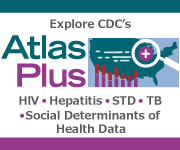Hepatitis C: By the Numbers
In 2020, nearly 15,000 death certificates listed hepatitis C as an underlying or contributing cause of death in the United States and the number of people newly infected has risen dramatically in recent years, coinciding with the nation’s opioid crisis.
There is treatment available and most people with hepatitis C can be cured, but only if they know they have hepatitis C. This is why CDC recommends that everyone age 18 years and older get tested at least once in their lifetime and people with ongoing risk factors, such as injection drug use, be tested regularly.
ACUTE HEPATITIS C is a new infection that occurs within 6 months after someone is exposed to the hepatitis C virus, but they often don’t have symptoms. For more than half of the people who become infected, their acute infection leads to long-term (chronic) infection.
CHRONIC HEPATITIS C can be a “silent” lifelong and life-threatening infection. Left untreated, chronic hepatitis C can cause serious health problems, including liver damage, liver cancer, and even death.
CDC estimates more than 2 million people in the United States — approximately 1 percent of the U.S. adult population — have hepatitis C.

APPROXIMATELY 4 IN 10 PEOPLE with hepatitis C in the United States do not know they have it, which means that they aren’t seeing a doctor to get lifesaving treatment.
NEW HEPATITIS C VIRUS INFECTIONS ARE ALMOST 4X AS HIGH as they were a decade ago.
Data show that chronic hepatitis C affects every generation — underscoring CDC recommendations that every adult should be tested at least once in their lifetime for this curable infection. Previously, hepatitis C was mostly a concern for the baby boomer generation (people born from 1945-1965). Millennials (people born from 1981-1996) are now the fastest-growing age-group with hepatitis C virus infection.
High rates of hepatitis C among people of reproductive age also put the youngest generation at risk of infection because hepatitis C can be transmitted during pregnancy and childbirth.
From 2011 to 2014, the national proportion of births to pregnant people with hepatitis C increased from 0.19% to 0.32%. The increase in hepatitis C in this group is tied to an overall increase in new hepatitis C virus infections among reproductive aged adults.
CDC recommends hepatitis C testing for pregnant people during each pregnancy. Hepatitis C treatment is not approved for use during pregnancy, but screening during pregnancy provides a unique window of opportunity to diagnose hepatitis C among people who may not otherwise have insurance or seek regular treatment. Diagnosis also allows for patients to be referred for treatment after giving birth and for the provider and patient to take steps to reduce the risk of transmission to the infant.
About 95% of people with hepatitis C can be cured with two to 2-3 of well-tolerated oral-only direct acting antiviral (DAA) agents. CDC data show, however, that from 2014 to 2020, an average of 171,000 people were treated with DAAs in the U.S. each year – far short of the National Academies of Sciences, Engineering, and Medicine’s estimate that at least 260,000 people should be treated annually to eliminate hepatitis C by 2030. Additionally, the number of people with hepatitis C in the U.S. who initiated treatment with DAAs declined from 2015 to 2020.
TOO FEW PEOPLE WITH HEPATITIS C ARE AWARE OF THEIR INFECTION: Testing is the first step to being cured, yet about 40% of people with hepatitis C in the U.S. don’t know they have the infection.
PUBLIC AND PRIVATE INSURANCE OFTEN DENY = TREATMENT Some states and insurers restrict eligibility for hepatitis C treatment based on the severity of their liver damage or because the patient hasn’t remained sober long enough. The patient may also need to get a prescription from a liver disease specialist as opposed to their primary care doctor. Recently released CDC data show that only about 1 in 3 people with insurance get treatment for hepatitis C within a year of diagnosis, and this is even lower among people with Medicaid insurance.
COSTS FOR TREATMENT IS HIGH: Some people might not get curative hepatitis C treatment because they can’t afford it or because they don’t have health care coverage. Those without insurance or who cannot afford treatment can explore pharmaceutical patient assistance programs and cost-sharing assistance programs. NASTAD.org is one resource for more information on assistance programs for hepatitis C treatment.
Expanding testing and removing barriers to treatment are key to linking the millions of Americans living with this deadly, yet curable, infection, to care.
To find free hepatitis C testing in their area, people can visit gettested.cdc.gov.
For more information visit www.cy118119.com/nchhstp/newsroom





